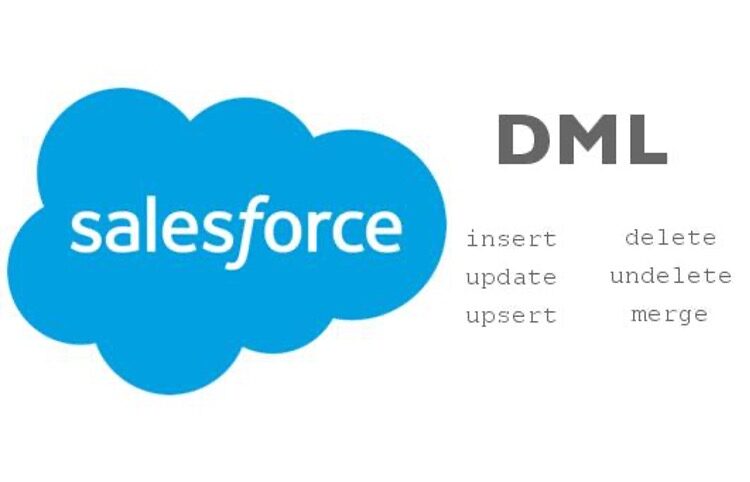Introduction to Salesforce DML Operations
Salesforce DML or Data Manipulation Language is a set of operations that allow users to manage and manipulate data in Salesforce. These operations include insert, update, delete, upsert, and undelete. Insert operation allows adding new records to the database while update operation updates existing records. Delete operation removes one or more records from the database permanently.
Upsert operation is used for both insert and update based on specific criteria such as matching record id or external id field value. Undelete operation restores deleted records from the recycle bin which can be done within 15 days of deletion. Salesforce DML operations can be performed using Apex code, Visualforce pages or API.
Effective use of Salesforce DML operations requires understanding the data structure and relationships between objects in the organization’s data model. Proper error handling and exception management are also necessary to ensure successful execution of these operations without any loss of data integrity or security breaches. Overall, mastering Salesforce DML techniques is essential for efficient data management in the Salesforce environment leading to better outcomes for businesses leveraging its capabilities effectively.
Inserting Data with Salesforce DML
Inserting data with Salesforce DML is a crucial component of successful data management. With the help of DML, organizations can easily add new records to their database and update existing ones as per their business requirements. The process of inserting data using DML involves creating an object instance, setting its fields values, and then calling the insert method on that object instance.
To insert a new record in Salesforce, one should begin by constructing an instance of the relevant SObject type followed by populating field values. To ensure successful insertion of records, it’s important to double-check any constraints or validation rules that may be running in the background before proceeding with the insertion. One should also consider implementing error handling techniques such as try-catch blocks to prevent issues caused by malformed or invalid input data.
Overall, mastering Salesforce DML is an essential aspect of effective data management within the platform. By understanding and leveraging these techniques effectively, businesses can streamline their workflows and improve overall efficiency while ensuring compliance with relevant regulations and standards.
Take your Career next level with Our Salesforce CPQ Tutorial
Updating Data with Salesforce DML
Salesforce DML (Data Manipulation Language) is a critical aspect of data management in the Salesforce environment. Updating existing data is an essential part of maintaining accurate and up-to-date records. The process involves changing or modifying specific fields within a record or multiple records simultaneously.
There are various ways to update data in Salesforce, including using the standard user interface, Apex code, or third-party tools like DataLoader. However, DML statements remain the most efficient method for updating large volumes of data quickly and accurately.
To perform DML operations on records using Apex, developers use methods such as insert(), update(), upsert(), delete(), undelete() and other specialized callouts for specific scenarios like email sending etc. It’s important to note that each method has its unique syntax requirements and limitations depending on the type of operation being performed. Therefore it’s crucial to understand these differences before attempting any updates using Salesforce DML commands.
Deleting Data with Salesforce DML
Deleting data with Salesforce DML is a crucial aspect of data management that must be closely monitored to avoid any unwanted consequences. When deleting data, it is important to ensure that all related records are also deleted. This can be done by setting up cascade delete rules in the relationship fields between objects.
Salesforce offers various methods for deleting data using DML statements such as DELETE and TRUNCATE. The DELETE statement allows the deletion of individual records or multiple records based on certain criteria such as a specific field value or date range. On the other hand, TRUNCATE deletes all records from an object without taking into consideration the relationships between objects.
It is important to exercise caution when using TRUNCATE as it cannot be undone and may result in unintended consequences such as loss of valuable data. Therefore, it is recommended to use the DELETE statement instead, which provides more control over the deletion process and allows for easier recovery of accidentally deleted data. Overall, proper usage and understanding of Salesforce DML techniques for deleting data are essential for effective data management within an organization.
Upserting Data with Salesforce DML
Upserting data is a critical feature of Salesforce DML, allowing users to insert new records or update existing ones based on unique identifiers. This process saves time and effort by eliminating the need to manually check for duplicates and perform separate insert and update operations. Upserts also ensure data accuracy by preventing the creation of duplicate records, which can cause confusion and errors.
To upsert data in Salesforce, users must first specify a field or combination of fields as the external ID. This identifier serves as a reference point for determining whether a record already exists in the system. Once an external ID is established, users can use the upsert command to either insert new records or update existing ones based on matching values in that field.
Overall, mastering upserting techniques with Salesforce DML is essential for efficient data management in any organization that uses this powerful CRM platform. By optimizing workflows and minimizing errors through effective upserting strategies, businesses can maximize their productivity and streamline their operations to achieve greater success.
Conclusion
In conclusion, Salesforce DML (Data Manipulation Language) operations play a vital role in managing and manipulating data within the Salesforce platform. Whether it’s inserting new records, updating existing ones, deleting data, upserting records, or undeleting data, understanding and effectively utilizing DML operations is crucial for maintaining data integrity and driving business success.
